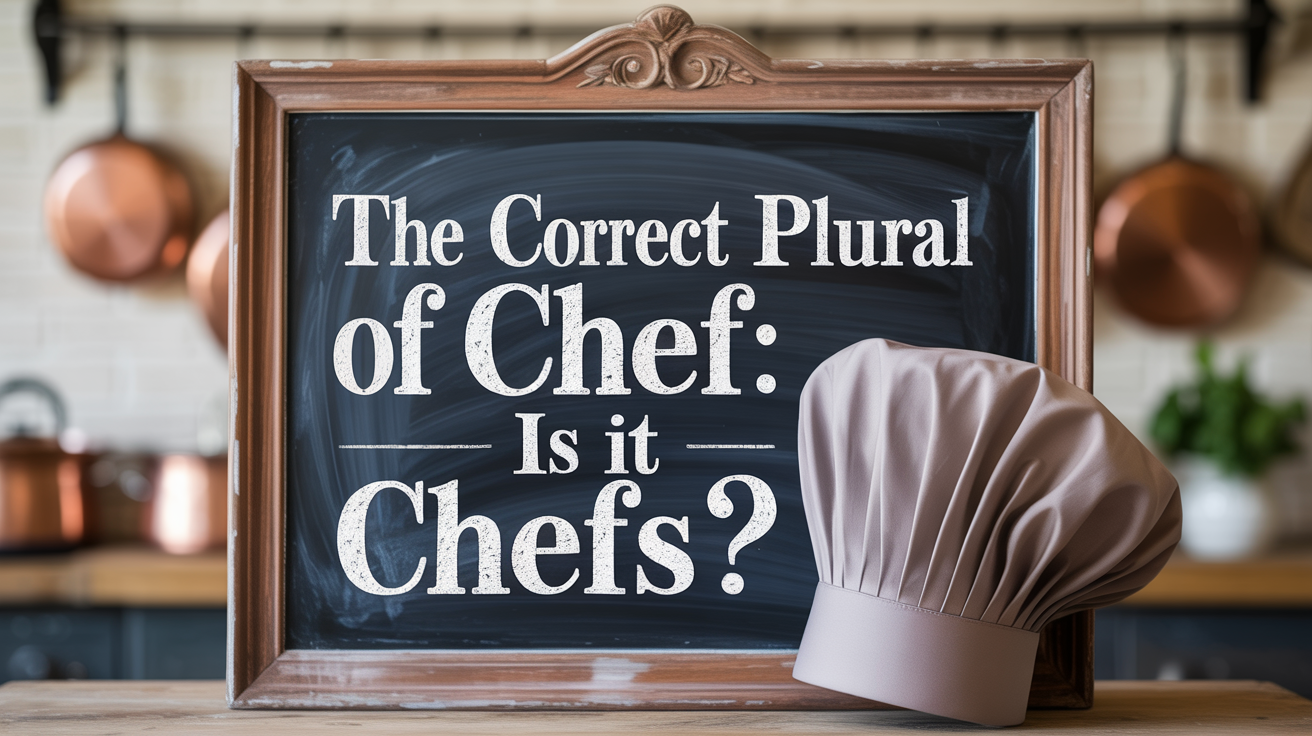If you’ve ever wondered whether the plural of chef is “chefs” or “cheves,” you’re not alone. English is full of tricky pluralization rules, especially when it comes to borrowed words from other languages. In this post, we’ll dive into the correct plural form of chef, clear up the confusion, and explore how French-origin words like this shape English grammar.
What Is the Correct Plural of Chef?
Let’s get straight to the point: the correct plural of chef is chefs. This is the standard plural form you’ll encounter in English when referring to more than one chef. It follows a simple rule of pluralization for regular nouns in English, especially those ending in -f or -fe. The confusion around “cheves” stems from misconceptions rooted in French, but we’ll explore that in more detail shortly.
For example:
- One chef works in the kitchen.
- Several chefs are preparing the banquet.
You can see that “chefs” is the right way to refer to more than one chef.
Read More About This Article: What is the Plural of Erratum? The Real Answer to Erratums vs. Errata
Understanding Regular vs. Irregular Plurals
Before we dive deeper into the specifics of chef and its plural form, it’s essential to grasp the distinction between regular and irregular plurals.
Regular Plurals
Regular plurals are the most straightforward form of pluralization in English. Most nouns form their plural by simply adding an “s” or “es” at the end. This applies to a wide variety of words, including common ones like:
- cat → cats
- dog → dogs
- book → books
These words follow predictable patterns, and you don’t have to worry much about exceptions.
Irregular Plurals
Irregular plurals, on the other hand, don’t follow the standard “s” or “es” pattern. They often undergo changes in vowels or completely transform into a new word. For example:
- man → men
- child → children
- goose → geese
However, chef isn’t an irregular plural. It follows the typical English pluralization rule for words ending in -f or -fe.
Why Some People Might Say “Cheves”
You might have heard people refer to the plural of chef as “cheves” — but why is that? The confusion stems from the French origin of the word chef. In French, some words that end in -f or -fe follow a different pattern when pluralized. For example:
- lèvre (lip) becomes lèvres (lips)
- chef in French can be pluralized as chefs as well, but in some cases, one might mistakenly assume cheves based on other words like loup (wolf), which in plural becomes loups.
It’s important to note that in English, we tend to follow the standard rules for pluralizing chef, which results in chefs, rather than the alternative “cheves.”
How the English Language Adapts French Words
English has long borrowed words from other languages, especially French. Many French words retain their original forms when they enter English, while others are modified to fit English grammar rules. The word chef is one such example. While it keeps its French spelling, the plural form follows English conventions.
The adaptation process of French words into English is a fascinating one. Some words are fully anglicized, like ballet or café, while others, like chef, maintain their French characteristics but conform to English pluralization rules.
Why “Chefs” and Not “Cheves”?
In short, English speakers don’t need to overcomplicate the pluralization of chef. English generally follows the -s rule for pluralizing words ending in -f or -fe. So, chef becomes chefs just like roof becomes roofs, or leaf becomes leaves.
The Importance of Correct Pluralization in Professional Settings
When it comes to professions like cooking, using the correct plural form of words like chef is essential, not just for grammar but for professionalism. Imagine reading a restaurant menu or a culinary magazine and finding cheves instead of chefs. It might not seem like a big deal, but in the culinary world, where precision and detail matter, correct usage of language is an important aspect of professionalism.
In the Culinary World
In the kitchen, chef is a revered title, and getting the plural form right is essential when referring to a team of chefs. For example:
- “Our chefs have prepared a gourmet meal for tonight’s guests.”
- “The chefs worked tirelessly to create a masterpiece.”
Incorrectly using cheves would diminish the credibility of the writing, and readers might perceive it as less polished or professional.
Communication in General
Even outside professional kitchens, proper pluralization reflects well on your writing. It shows that you have a firm grasp of language conventions. Whether you’re writing for an academic paper, a business report, or just crafting an email, using the correct plural form ensures your communication is clear and authoritative.
Common Pluralization Mistakes
Let’s explore some common mistakes people
